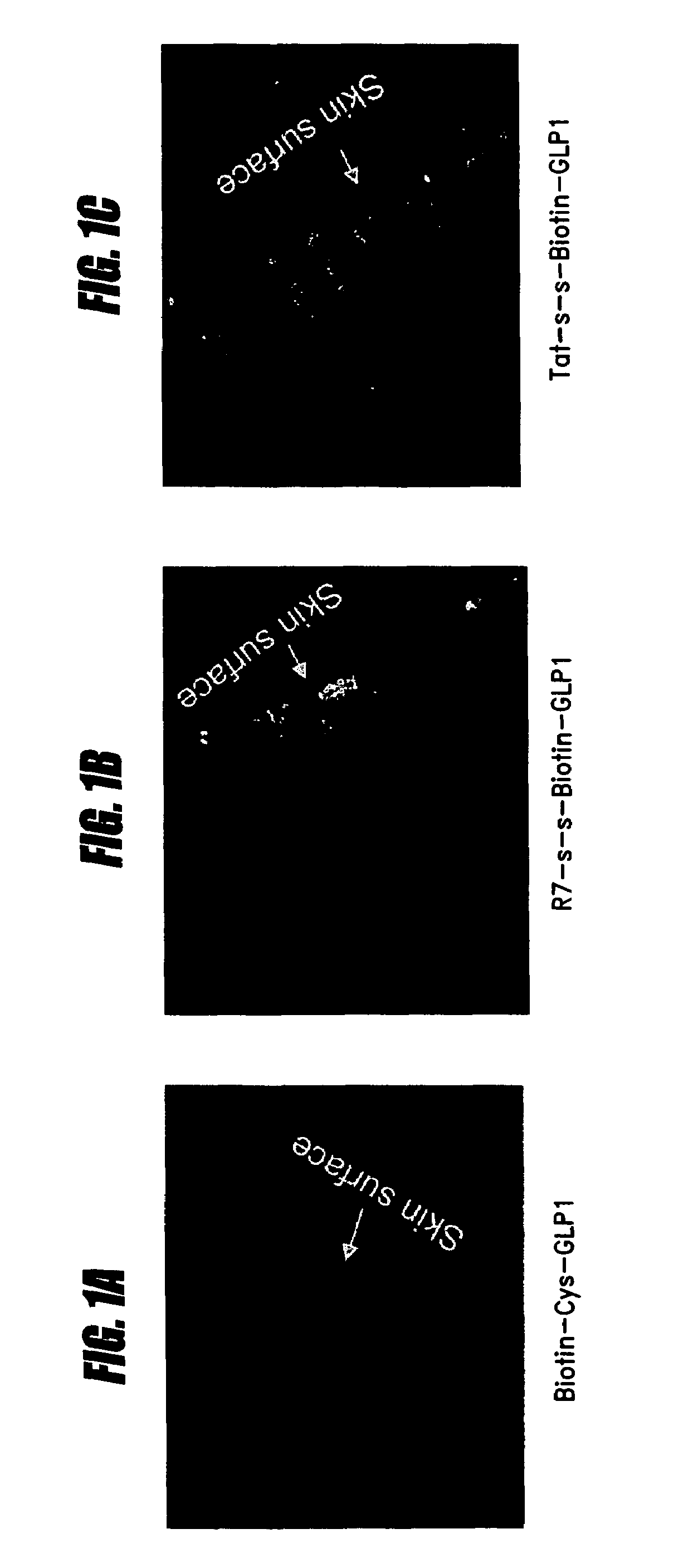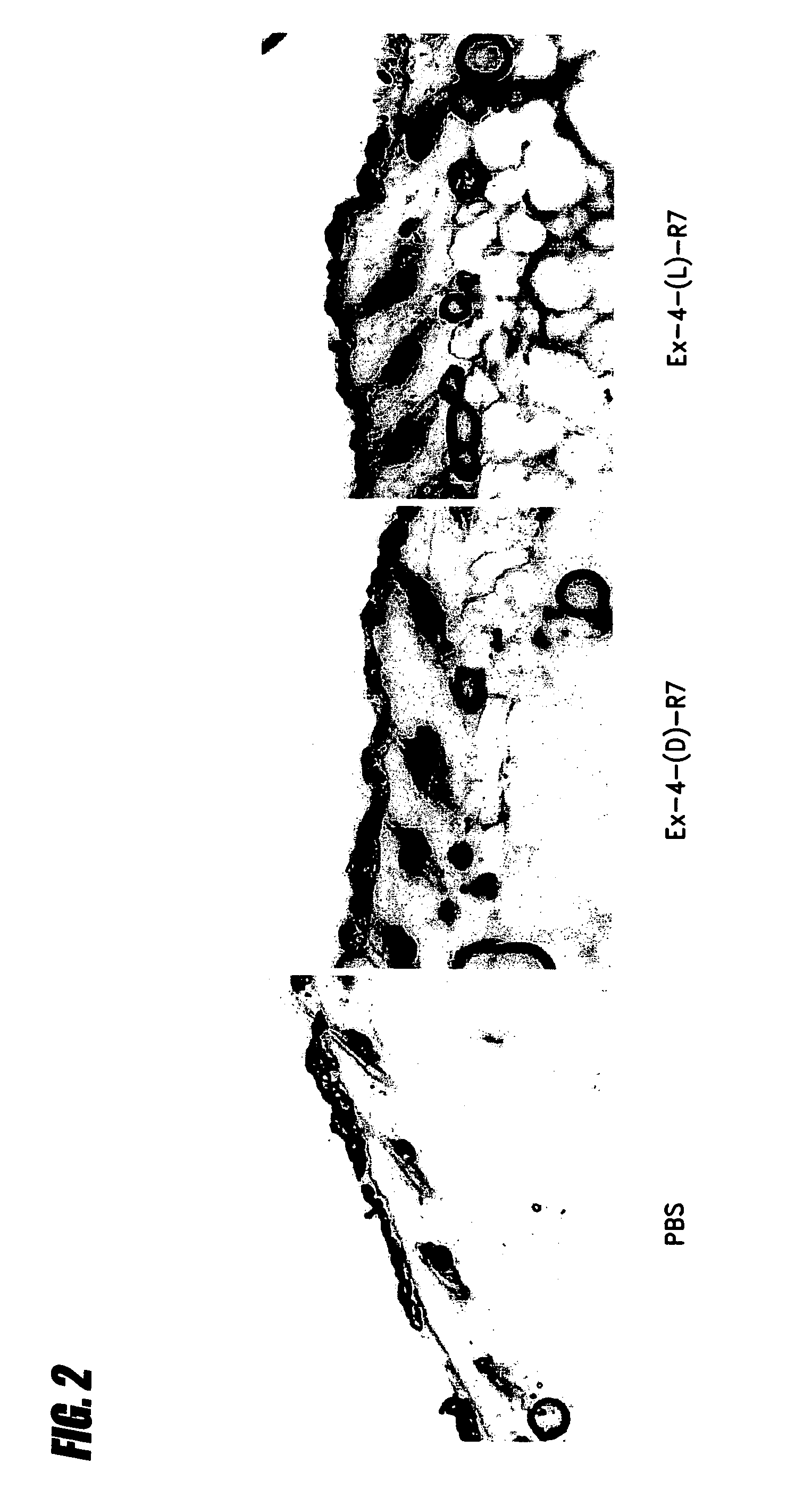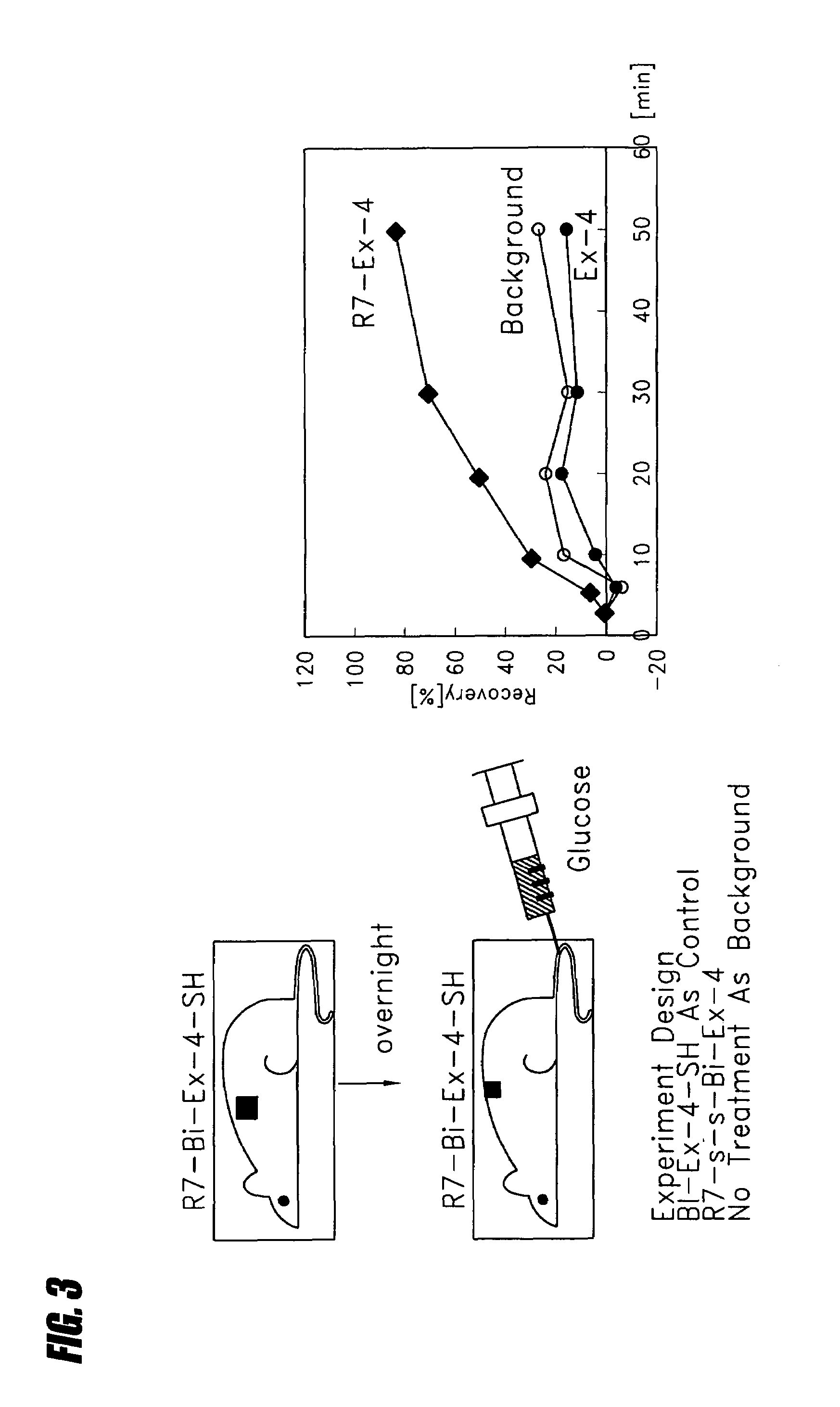Transepithelial delivery of peptides with incretin hormone activities
a technology of incretin and peptides, applied in the field of compositions, can solve the problems of long-term damage, inability to deliver peptides, and widespread and devastating effects of insulin secretion and action, and achieve the effect of increasing the delivery of peptides
- Summary
- Abstract
- Description
- Claims
- Application Information
AI Technical Summary
Benefits of technology
Problems solved by technology
Method used
Image
Examples
example 1
Solid-phase Synthesis of Exendin-4 with an N-terminal Cysteine Residue
[0248]The sequence of the peptide is:
[0249]
(SEQ ID NO: 31)H2N-CHGEGTFTSD LSKQMEEEAV RLFIEWLKNG GPSSGAPPPS-CONH2
[0250]The synthesis is composed of the following steps: (1) swelling / deprotection of resin; (2) extending the peptide chain; (3) cleavage and (4) purification.
[0251]1. Swelling / deprotection of resin. 540 mg of Fmoc-Rink (Fmoc-Rink-linker is also known as 4′-{(R,S)-alpha-[1-(9-Fluorenyl)methoxycarbonylamino]-2,4-dimethoxybenzyl}-phenol)amide resin (0.64 mmole / g substitution, 0.346 mmole scale) was swelled in a reaction vessel with DMF (N,N-dimethylformamide) while a nitrogen gas was bubbled through. DMF was drained after 40 minutes. The Fmoc (9-flurenylmethoxycarbonyl) protecting group on the resin was removed by treating the resin twice with 20% piperidine solution in DMF. Each treatment lasted for 5 minutes. After the deprotection, the resin was thoroughly washed with DMF.
[0252]2. Extending the peptide c...
example 2
Solid-phase Synthesis of Transepithelial Carrier and Cargo Peptides
[0256]The sequence of the r7c peptide is:
[0257]
H2N-RRRRRRRC-CONH2(SEQ ID NO:32)
[0258]The sequence of Ex4-L-R7 is
[0259]
(SEQ ID NO: 45)NH2-HGEGTFTSDLSKQMEEEAVRLFIEWLKNGGPSSGAPPPSRRRRRRR-CONH2
[0260]The sequence of Ex4-D-R7 is
[0261]
(SEQ ID NO: 45 with all D amino acids)NH2-HGEGTFTSDLSKQMEEEAVRLFIEWLKNGGPSSGAPPPSDRDRDRDRDRDRDR-CONH2
[0262]The sequence of Ex4 is
[0263]
(SEQ ID NO: 6)NH2-HGEGTFTSDLSKQMEEEAVRLFIEWLKNGGPSSGAPPPS-CONH2
[0264]Syntheses of the transepithelial carrier and cargos follow the same procedure as described in Example 1.
example 3
Activation of the Transepithelial Carrier for Conjugation
[0265]
[0266]A sample of purified r7c (250 mg, 0.2 mmole) was dissolved in 70 mL of 3:1 acetic acid / water. To this solution, 20 equivalent of dithio-bis(5-nitropyridine) (DTNP) was added. The mixture was stirred at room temperature for 72 hours. The solvent was removed by rotary evaporation at 40° C. The residue was redissolved in water, and the excessive DTNP was removed by washing with ethyl acetate. The aqueous solution was freeze dried to yield 150 mg of product (0.11 mmole, 55%).
PUM
| Property | Measurement | Unit |
|---|---|---|
| molecular mass | aaaaa | aaaaa |
| pH | aaaaa | aaaaa |
| pH | aaaaa | aaaaa |
Abstract
Description
Claims
Application Information
 Login to View More
Login to View More - R&D
- Intellectual Property
- Life Sciences
- Materials
- Tech Scout
- Unparalleled Data Quality
- Higher Quality Content
- 60% Fewer Hallucinations
Browse by: Latest US Patents, China's latest patents, Technical Efficacy Thesaurus, Application Domain, Technology Topic, Popular Technical Reports.
© 2025 PatSnap. All rights reserved.Legal|Privacy policy|Modern Slavery Act Transparency Statement|Sitemap|About US| Contact US: help@patsnap.com



